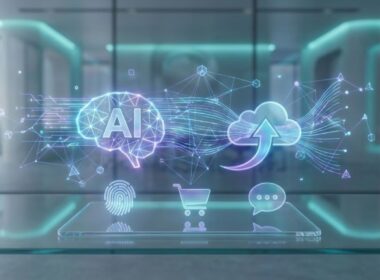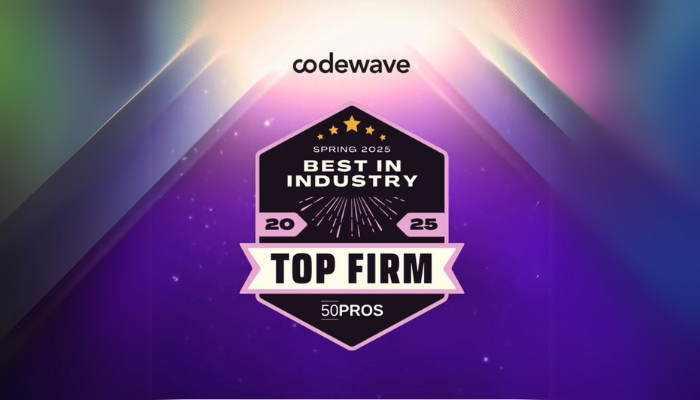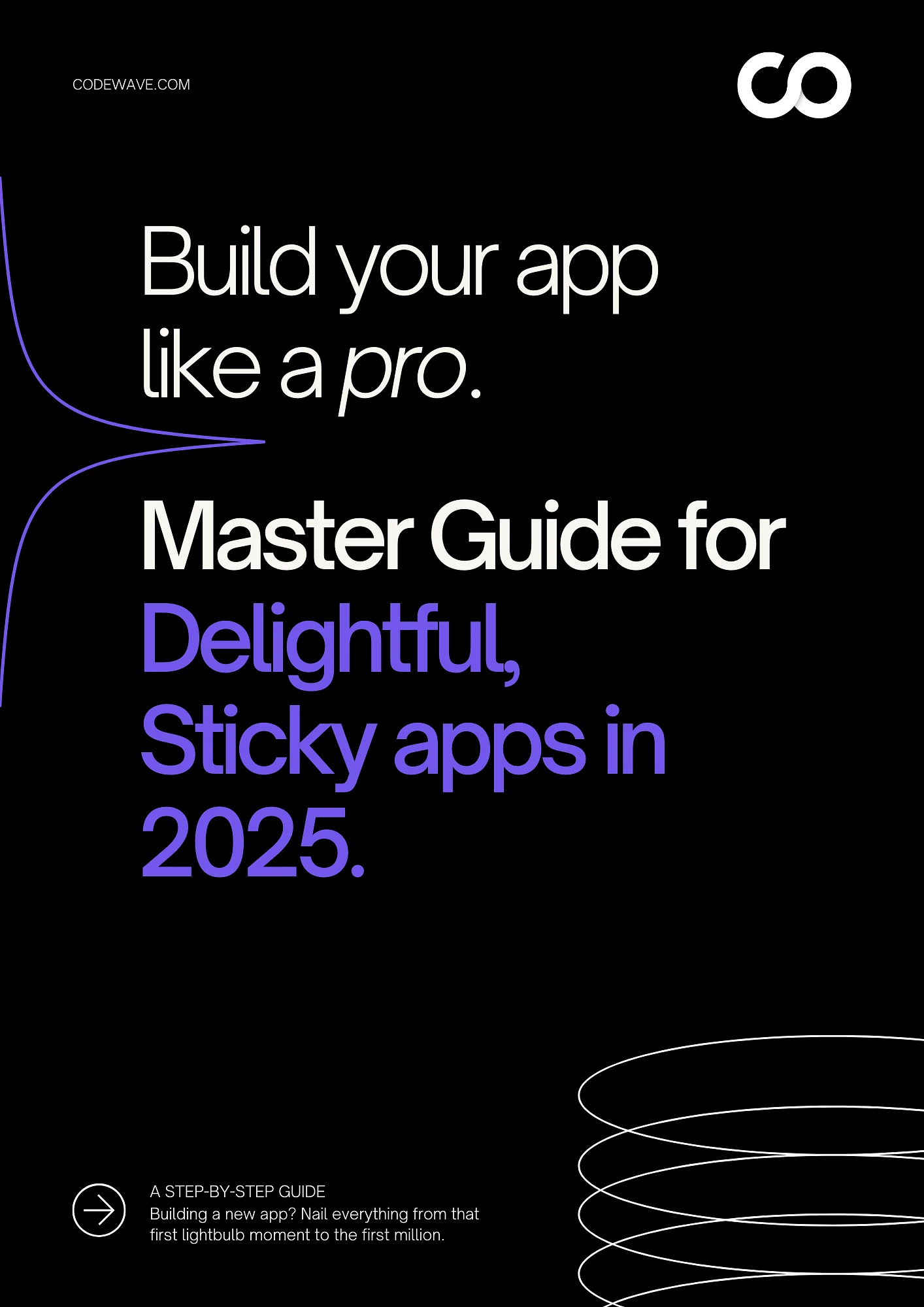“What do Siri, Alexa, and self-driving cars have in common?”
They’re all examples of agentic AI—systems that not only respond to inputs but act independently based on learned data. From voice assistants to autonomous vehicles, agentic AI is rapidly becoming a part of our everyday lives, pushing the boundaries of what technology can do.
In this blog, we’ll guide you through what agentic AI is, explore its different types, and dive into the best frameworks and tools driving this change. We’ll also look at real-world use cases, helping you understand how agentic AI can be implemented in your business to tap into its full potential.
What is Agentic AI?
Agentic AI refers to artificial intelligence systems designed to act autonomously with goal-directed behavior, making decisions and taking actions to achieve specific objectives without constant human intervention.
Unlike traditional AI, which follows predefined rules or responds passively to inputs, Agentic AI exhibits agency—meaning it can initiate actions, adapt to changing environments, and pursue long-term goals.
Key Characteristics of Agentic AI
- Autonomy
- Can operate independently, making decisions without step-by-step human guidance.
- Example: An AI assistant that schedules meetings by analyzing calendars and emailing participants.
- Goal-Directed Behavior
- Works towards defined objectives, breaking them into subtasks.
- Example: AutoGPT researching a topic, summarizing findings, and generating a report.
- Adaptability
- Adjusts strategies based on real-time feedback or environmental changes.
- Example: A trading bot modifying investment strategies based on market shifts.
- Tool Use & Interaction
- Can integrate with APIs, databases, and other software tools.
- Example: An AI agent fetching live data via APIs to answer user queries.
- Memory & Context Awareness
- Retains past interactions to improve future decisions.
- Example: A customer support bot recalling a user’s previous issues for faster resolution.
- Multi-Agent Collaboration
- Multiple AI agents can work together to solve complex problems.
- Example: One agent handling research while another drafts content.
How Agentic AI Differs from Traditional AI
| Feature | Traditional AI (e.g., Chatbots) | Agentic AI (e.g., AutoGPT) |
| Autonomy | Follows scripted responses | Takes independent actions |
| Goal-Oriented | Reactive (responds to inputs) | Proactive (pursues goals) |
| Adaptability | Limited learning capability | Adjusts strategies dynamically |
| Tool Usage | Rarely integrates with tools | Actively uses APIs & tools |
| Memory | Short-term context | Long-term memory & recall |
Since Agentic AI requires autonomy, adaptability, and tool integration, specialized frameworks have emerged to help developers build such systems. Below are the best Agentic AI frameworks and tools available today.
Best Agentic AI Frameworks & Tools
Let’s explore some of the top agentic AI frameworks and tools that can help you build autonomous systems with the ability to learn and make decisions on their own.
1. Microsoft AutoGen
Microsoft AutoGen is a great option for businesses that want to get up and running with agentic AI quickly. It helps automate tasks and decision-making processes with minimal technical knowledge. Whether you’re looking to automate your customer service or manage data processes, AutoGen makes it easy to deploy AI solutions without a steep learning curve.
Key Features:
- Minimal Coding: Designed for quick deployment with minimal technical skills required. This makes it easier for teams to implement without needing to write complex code.
- Automated Decision-Making: Handles tasks like decision-making, automating processes without needing constant supervision.
- Microsoft Integration: Seamlessly integrates with other Microsoft tools like Azure and Office 365, making it a great option for businesses already within the Microsoft ecosystem.
| Pros | Cons |
| Easy to use and deploy without coding | Not suitable for complex, customized solutions |
| Integrates well with Microsoft ecosystem | Limited flexibility for advanced AI use cases |
| Great for small to medium-scale applications | Best suited for simpler tasks |
2. LangChain
LangChain is a powerful framework for building applications that need strong natural language processing. It’s great for creating AI agents that can understand and process text, making it a go-to for chatbots and virtual assistants. If your AI needs to interact with users or understand large sets of data, LangChain offers the flexibility to do so effectively.
Key Features:
- Modular Design: LangChain allows you to build applications using various pre-built components. You can add or remove modules based on your specific use case, making it highly flexible.
- Natural Language Processing: Excellent at handling and understanding text, making it a perfect choice for applications that require language comprehension and interaction.
- Support for Multiple Models: It works with a wide range of language models, which allows for more dynamic, customizable AI responses.
| Pros | Cons |
| Flexible and customizable | Requires coding expertise |
| Strong open-source community support | Can be overwhelming for simple tasks |
| Great for advanced NLP tasks | May be too complex for small projects |
3. CrewAI
CrewAI is an open-source framework built for efficiency. Its standout feature is the no-code interface, making it incredibly accessible for users who may not be familiar with coding. It’s a great choice if you’re looking to create simple AI agents quickly, whether it’s for automating tasks or handling customer queries.
Key Features:
- No-Code Interface: Ideal for users without coding experience, CrewAI provides a simple, intuitive interface for building AI agents.
- Custom Workflows: Users can design automated workflows tailored to their business needs, making it ideal for operational tasks and data management.
- Quick Setup: Designed to help businesses deploy AI systems rapidly without a steep learning curve.
| Pros | Cons |
| User-friendly, no coding needed | Limited functionality for large-scale projects |
| Fast to implement | May lack advanced features for complex tasks |
| Customizable for small business needs | Less flexibility for highly tailored solutions |
Also Read: Top Open Source Chatbot Frameworks to Use
4. LangGraph
LangGraph combines the power of language models with graph-based data structures. This makes it a great fit for applications that need to deal with complex relationships between data points. Whether you’re in finance, healthcare, or any other sector where data connections are key, LangGraph helps AI agents make more informed decisions based on relational data.
Key Features:
- Graph-Based Data Processing: LangGraph integrates language models with graph data structures, allowing AI to process complex relationships between data points.
- Advanced Reasoning: The framework supports logical reasoning, which helps AI agents make more informed and thoughtful decisions based on complex data.
- Scalability: LangGraph is built to handle large-scale applications, making it suitable for industries with massive amounts of data.
| Pros | Cons |
| Excellent for complex data relationships | Requires deep knowledge of AI concepts |
| Scalable for large-scale data-driven tasks | Steep learning curve for new users |
| Flexible for a range of industries | Overkill for simpler applications |
Ready to scale your AI effortlessly?
With Codewave’s infrastructure development services, we ensure your AI grows smoothly without a hitch. From seamless cloud solutions to optimized systems, we build the foundation for your AI to handle increased tasks and data.
5. Microsoft Semantic Kernel
The Microsoft Semantic Kernel focuses on helping AI agents make decisions based on context. By understanding the nuances of data, it provides a more intelligent way of interacting with users and systems. If your business needs to build AI systems that require deep understanding and adaptive decision-making, the Semantic Kernel is a good choice.
Key Features:
- Contextual Decision-Making: The Semantic Kernel excels at understanding the context behind data and using that understanding to make more intelligent, context-aware decisions.
- Integration with Microsoft Tools: Like other Microsoft products, the Semantic Kernel integrates well with the Microsoft ecosystem, making it easy to adopt for businesses already using Microsoft solutions.
- Scalable: Designed to scale as your business grows, supporting complex applications and large volumes of data.
| Pros | Cons |
| Great for understanding context in data | Best suited for businesses already using Microsoft products |
| Seamless integration with Microsoft tools | Less flexible outside Microsoft’s ecosystem |
| Scalable for large, complex applications | Requires familiarity with Microsoft tools |
6. OpenAI GPT-3 and GPT-4
OpenAI’s GPT-3 and GPT-4 are state-of-the-art language models that excel in understanding and generating human-like text. These models have been designed to enable AI agents to understand context, process complex queries, and provide relevant outputs across a variety of industries.
Key Features:
- Natural Language Understanding: GPT-3 and GPT-4 can process complex natural language inputs, making them capable of engaging in meaningful conversations, understanding the intent behind queries, and answering in a natural tone.
- Customizable Applications: These models allow developers to fine-tune the AI for specific tasks like customer service automation, content generation, or even creative writing.
- Generative Text Abilities: GPT-3 and GPT-4 can generate human-like responses, write articles, summarize content, and even simulate dialogue based on prompts. They are widely used in applications that require detailed, dynamic content generation.
| Pros | Cons |
| Can generate high-quality, coherent text | Expensive for large-scale usage |
| Flexible for a wide range of applications | It may require fine-tuning for specialized use cases |
| Continuously improving with new updates | Not always perfectly accurate for niche topics |
Use Case:
Perfect for businesses looking to build intelligent chatbots, content generation tools, or AI-driven customer support platforms that require the ability to understand and generate human-like responses.
7. TensorFlow Agents
TensorFlow Agents is an open-source library for building reinforcement learning (RL) agents. It is based on TensorFlow, one of the most widely used machine learning frameworks, and provides tools for training and deploying decision-making agents that can improve over time.
Key Features:
- Reinforcement Learning: TensorFlow Agents supports deep reinforcement learning, allowing agents to learn by interacting with their environment and receiving feedback.
- Flexible Architecture: It allows developers to experiment with different algorithms for learning, like Q-learning, DQN, and others, to create optimized solutions.
- Integration with TensorFlow: Since it’s built on TensorFlow, it integrates seamlessly with TensorFlow-based models for advanced machine learning tasks.
| Pros | Cons |
| Open-source and free to use | Requires deep knowledge of reinforcement learning |
| Highly flexible for different learning models | Can be computationally intensive for large-scale environments |
| Strong community support and documentation | More complex setup compared to simpler AI tools |
Use Case:
Ideal for projects where AI agents need to make decisions through trial and error, such as robotics, dynamic pricing models, or complex strategy games.
8. IBM Watson
IBM Watson is a powerful AI platform that offers a wide range of tools for building intelligent applications. It includes natural language processing (NLP), machine learning, and deep learning capabilities, which allow users to create autonomous agents capable of understanding, processing, and responding to data in a meaningful way.
Key Features:
- Natural Language Processing: Watson’s NLP capabilities allow AI agents to process and understand human language at scale.
- AI-Powered Decision-Making: It supports decision-making based on data, offering insights into customer behavior, operational efficiencies, and more.
- Industry-Specific Solutions: IBM Watson offers specialized tools for industries like healthcare, finance, and retail, helping businesses build tailored AI solutions.
| Pros | Cons |
| Robust set of tools for building AI solutions | Requires technical expertise to set up |
| Excellent for customer service automation | High implementation cost for smaller businesses |
| Industry-specific solutions | Integration with existing systems may require additional work |
Use Case:
Perfect for businesses in sectors like healthcare, finance, or customer service that need sophisticated AI solutions for decision-making, data insights, and automation.
For more insights on how AI can be applied to robotics, dynamic pricing models, or complex strategy games.
Check out our blog on AI Applications in Robotics and More
9. Google Cloud AI
Google Cloud AI provides a suite of AI tools and APIs for building agentic AI applications. With services like AutoML, the Vision AI API, and Natural Language API, businesses can create intelligent agents for a variety of purposes, from analyzing images to processing text and speech.
Key Features:
- AutoML: Allows businesses to build custom machine learning models tailored to their needs without requiring extensive coding knowledge.
- Pre-built APIs: Google offers a wide variety of pre-built models for language, vision, and speech processing.
- Scalable Cloud Infrastructure: Built on Google’s cloud infrastructure, it allows businesses to scale their AI solutions as needed.
| Pros | Cons |
| Extensive AI tools and pre-trained models | Can become expensive as usage increases |
| Scalable and integrated with Google Cloud | Requires some knowledge of Google Cloud services |
| Offers easy-to-use tools like AutoML | Limited customization for complex models |
Use Case:
Ideal for businesses looking to leverage pre-built AI solutions for image recognition, text analysis, or speech-to-text, especially those already using Google Cloud services.
10. Rasa
Rasa is an open-source conversational AI platform designed to build custom AI chatbots and voice assistants. It’s built for creating intelligent, conversational agents that can handle complex, multi-turn conversations and integrate with existing systems.
Key Features:
- Open-Source: Fully open-source, offering full control over AI models and data.
- Customizable Conversations: Rasa allows businesses to create highly customizable conversation flows and decision-making processes.
- Strong Integrations: Works well with existing business systems like CRM, support, and ticketing systems.
| Pros | Cons |
| Highly customizable and open-source | Requires more time and effort to set up |
| Great for handling complex conversations | Needs coding knowledge to fully utilize |
| Strong community support and documentation | Can be resource-intensive for large-scale implementations |
Use Case:
Best for businesses looking to build advanced conversational agents, such as customer service bots or virtual assistants, that need to handle complex conversations and integrate with existing platforms.
These frameworks and tools are at the forefront of building intelligent, autonomous systems in businesses across industries. Depending on your needs—whether for chatbots, decision-making agents, or complex data processing—there’s a framework here that can help you implement agentic AI in a way that aligns with your goals.
Deploy your first AI agent in 72 hours – or don’t pay!
Schedule your free scoping call today ➔
Now that we’ve covered some of the best agentic AI frameworks and tools, it’s important to understand how they stack up against each other.
Comparative Analysis: Which Framework is Right for You?
In this section, we’ll compare these frameworks based on key criteria such as ease of use, scalability, flexibility, and integration capabilities. This will help you make an informed decision about which agentic AI framework is best suited to your business objectives.
| Framework | Ease of Use | Scalability | Customization | Integration | Cost |
| Microsoft AutoGen | Very easy | Moderate | Low (limited customization) | Strong (Microsoft tools) | Moderate |
| LangChain | Moderate | High | High | High (multi-model support) | Moderate |
| CrewAI | Very easy | Low | Low (limited for complex tasks) | Moderate | Low |
| LangGraph | Moderate to High | Very High | High | High (great for data-heavy industries) | High |
| Microsoft Semantic Kernel | Moderate | High | Moderate (depends on Microsoft tools) | High (Microsoft products) | High |
| OpenAI GPT-3 / GPT-4 | Easy to Moderate | High | High | Moderate (needs integration) | High |
| TensorFlow Agents | High (for ML experts) | Very High | High | High (TensorFlow ecosystem) | Low (open-source) |
| IBM Watson | Easy to Moderate | High | High | Very High (IBM ecosystem) | High |
| Google Cloud AI | Easy | Very High | Moderate to High | Very High (Google ecosystem) | High |
| Rasa | Moderate to High | High | Very High | High (wide integrations) | Low (open-source) |
Factors to Consider While Choosing an AI Agentic Framework
Choosing the right AI agentic framework is more than just picking the most advanced or popular one. There are several key factors that can truly impact the success of your AI initiatives. Here’s what you should really focus on:
1. Compatibility with Existing Systems
- Ensure the framework integrates smoothly with your current infrastructure.
- Avoid friction with existing data pipelines, tools, and platforms.
- A framework that fits into your setup will save you time and headaches in the long run.
2. Flexibility Over Specificity
- Look for frameworks that can evolve with your needs.
- Choose flexibility to scale and adapt, rather than a solution designed for a specific task.
- A versatile framework will support long-term business growth.
As we discussed the importance of flexibility in AI frameworks, a great example of this can be seen in the work we did with Tautmore.
By leveraging AI, we were able to create a dynamic and adaptive online learning platform that personalizes educational content for K12 learners, meeting each student’s unique needs.
3. Data Privacy and Security
- Make sure the framework has robust security measures in place.
- Ensure compliance with data protection regulations like GDPR or HIPAA.
- Prioritize frameworks that guarantee data protection both in transit and at rest.
4. Model Explainability
- Look for frameworks that allow you to understand and explain how models make decisions.
- This is crucial, especially in regulated industries or when ethical decision-making is a priority.
- Transparency in AI models builds trust and helps ensure responsible AI use.
5. Scalability
- Choose a framework that can scale with your business.
- Consider future data growth and increased demand for real-time processing.
- A scalable framework will handle more users, data, and complexity as you expand.
6. Total Cost of Ownership
- Don’t just consider the initial cost—think about long-term maintenance and hidden costs.
- Factor in training, resource allocation, and ongoing support.
- A framework that’s easy to maintain and grow will save you money in the long run.
7. Community Support and Documentation
- A strong community and detailed documentation can make a huge difference.
- Having support when you run into challenges speeds up troubleshooting and learning.
- Look for frameworks with active communities and well-maintained guides.
8. Ethical AI Capabilities
- Ensure the framework includes mechanisms to avoid biases and unethical behavior.
- Fairness, accountability, and transparency are critical components in AI development.
- Choose frameworks that help you create responsible, ethical AI solutions.
The right AI agentic framework should align with your business goals, scale effortlessly as you grow, and prioritize security and ethics. Take your time, evaluate all the factors, and choose wisely—because the framework you choose will play a critical role in shaping your AI future.
Now that we’ve got the framework figured out, let’s take a peek into the crystal ball and explore the future trends in agentic AI—because what’s coming next is anything but boring!
Future Trends in Agentic AI
As agentic AI continues to evolve, here are the key trends shaping the future of this technology:
- Smarter Decision-Making:
Agentic AI will become even more autonomous, handling complex tasks and making data-driven decisions with minimal human oversight. - AI Collaboration Across Platforms:
Expect AI systems to collaborate seamlessly across platforms—integrating with IoT devices, cloud infrastructure, and other AI agents to create more dynamic ecosystems. - Hyper-Personalization:
AI will push personalization to new heights, delivering tailored experiences based on real-time data, especially in sectors like healthcare, retail, and education. - Ethical AI:
With greater autonomy, the focus will shift towards ensuring ethical practices in AI decision-making, promoting transparency, fairness, and bias mitigation. - Integration with AR/VR:
AI will work alongside augmented reality (AR) and virtual reality (VR) to provide immersive, interactive experiences, transforming training, customer service, and education. - Human-AI Collaboration:
AI will increasingly collaborate with human workers, enhancing productivity by offering real-time support, automating tasks, and assisting in decision-making.
Now that we’ve explored the exciting possibilities and future trends of agentic AI, the next step is ensuring that your business takes full advantage of these advancements.
But with so many options and frameworks available, it can be overwhelming to know where to start or how to integrate them effectively. That’s where Codewave comes in.
Why Codewave is Your Ideal Partner in Implementing Agentic AI
The agentic AI market is projected to hit $47.1 billion by 2030, showing just how crucial these technologies will be in the coming years. As businesses look to capitalize on the growing demand for autonomous systems, it’s essential to implement the right frameworks that drive value and align with your goals.
At Codewave, we specialize in designing and deploying AI-driven solutions that are specifically customized to your business objectives. From selecting the right frameworks to integrating them smoothly into your operations, our expert team ensures your AI projects are set up for success.
Here’s why you should choose us as your partner in the AI journey:
- Customized AI Solutions: We don’t just implement out-of-the-box tools; we tailor AI systems to fit your business goals, ensuring that the technology works for you.
- Scalable & Future-Proof: Our solutions are built to grow with your business, easily adapting to changing needs and helping you stay ahead of technological trends.
- Seamless Integration: Whether you’re working with existing infrastructure or need a fresh start, we ensure a smooth, hassle-free integration of AI solutions.
- Real Results: With a track record of successful AI implementations, Codewave delivers systems that drive real, measurable results—whether improving efficiency, reducing costs, or enhancing customer experience.
If you’re ready to tap into the power of agentic AI and unlock new opportunities for growth, Codewave is here to guide you every step of the way.
Get a free AI strategy session with our experts.
Codewave is a UX first design thinking & digital transformation services company, designing & engineering innovative mobile apps, cloud, & edge solutions.







